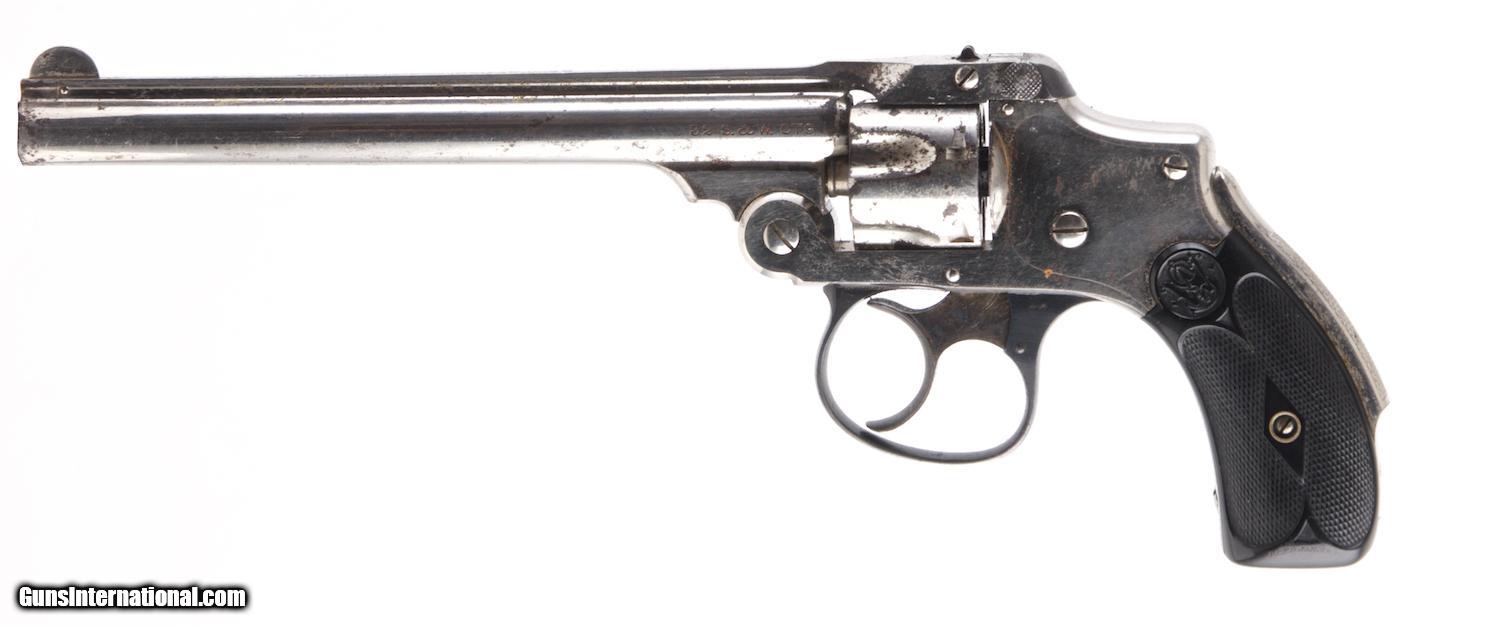Smith And Wesson 32 Safety Hammerless Serial Numbers
I have decided to thin my collection a bit and since pistols are not my strength I am considering selling two antique S&W revolvers. I have documentation from S&W that describes the revolvers as follows: The revolver on the top in the pictures is a.38 Safety Hammerless. This model was introduced in 1887 and manufactured until 1940 with a total production of 261,493 revolvers. Water World Movie Download Free. This model, which was also called the New Departure Model, was chambered to fire the.38 Smith & Wesson cartridge.
It was available in blue or nickel finish. During the first twenty years that this model was produced, four major design changes were made. These design improvements are now classified by collectors as separate models to distinguish the different variations from the original. The resulting five categories are simply labeled. Reason Core Security Keygen Idm. 38 Safety Hammerless First Model through.38 Safety Hammerless Fifth Model.
The revolver I have is classified as a Fourth Model. This model was introduced in 1898 and manufactured until 1910, with a total production of 104,000 revolvers.
Inherited it from my grandfather, not sure which caliber. Barrel is 3.5' long, serial number is 316XX 11192. Hi, I have one question concerning about the exact year of production: 'Smith & Wesson 1st Model Safety Hammerless.32 cal' - top break and so called lemon squeezer. The serial number is.

These were manufactured between serial numbers 116001 and 220000 of the.38 Safety Hammerless series. The revolver on the bottom in the pictures is a.32 Safety Hammerless Model, which is sometimes referred to as the New Departure Model.
This model was introduced in 1888 and manufactured until 1937 with a total of 242,981 revolvers being produced. The.32 Safety Hammerless was available in blue or nickel finish. During the first twenty-one years that this model was produced, two major design changes were made. These design improvements are now classified by collectors to distinguish the different variations from the original.
The resulting three categories are simply called.32 Safety Hammerless First Model,.32 Safety Hammerless Second Model and.32 Safety Hammerless Third Model. The revolver I have is classified as a Third Model. This model was introduced in 1909 and manufactured until 1937, with a total production of 72,981 revolvers. These were produced between serial numbers 170001 and 242981 of the.32 Safety Hammerless series.
Any input that anyone would have about the potential value of these revolvers would be appreciated. When it comes to pricing, original condition and finish are everything. A NIB example with all the paperwork will bring close to 'book' pricing, everything else is downward from there. It's only worth what someone is willing to give you for it.
+1 Given the same condition of the gun the NIB example will bring substantially more than the one without the box,the box may account for a third of the value.A drop in condition of 5% may cut the value 30% or more.In many cases a 90% condition rating can be half the 100%.When folks look at those values guides they always seem to gravitate to the highest price listed and ignore the condition factor and overgrade the gun.As Mike says,it's only worth what someone is willing to pay.
Nouvelle page 0 Smith & Wesson First model S&W Safety Hammerless. This revolver is made in 1887 total of 5125 revolvers.
It has a so called Z-bar. That’s the latch for opening the revolver.
When you press it when the revolver is open you can remove the cylinder for cleaning. The caliber is.38 S&W. The pearl handles are factory. Henk Smith & Wesson “Lemon Squeezer”.38 Safety Hammerless model Based on the shape of the barrel latch, what we have here is a.38 Safety Hammerless model, a.k.a 'Lemon Squeezer'. Smith&Wesson issued 5 different variants of the.38 and 3 of the.32 caliber. There are only small variations, though. The Safety Hammerless revolvers were the last of the topbreak series and come immediately before the Hand Ejector model with swing-out cylinder.
Production started in 1886 and the very last of these revolvers left the factory in 1940, long after production was resumed. The 3rd Model was introduced in 1890 at approx. Serial# 42484 and was produced until 1898 (highest known serial# is 116002). Your revolver is interesting because it is equipped with the quite scarce 6' barrel. Most of the production feature shorter barrels, the 2' one being nicknamed 'Bicycle Model'. Technically, those revolvers were quite advanced because they included an 'inertia-type' firing pin, developed by Joe Wesson, son of Daniel B.
This type of firing pin was mounted in the frame and spring-loaded. It could only hit the primer upon receiving a sufficient blow from the hammer, which transferred the momentum from the hammer to the firing pin itself.
When the concealed hammer was at rest against the firing pin, the pin would not protrude through the frame. I don't know who invented the system at first, but it wasn't Joe Wesson anyway. The 'inertia-type' firing pins were at the same period already in use in the Belgian Leclercq shotguns, and probably in numerous other weapons. Marcel Smith&Wesson Safety Hammerless “Lemon Squeeze” This revolver is a.38 caliber double-action Smith&Wesson Safety Hammerless, issued between 1898 and 1907 and also known as the 'lemon squeeze' due to the safety catch protruding at the rear of the grip frame. Collectors have distingue 5 models in this serial, all with minor variations.
The conventional top-break barrel latch identifies it as the Fourth Model, made from 1898 to 1907. The serial numbers in this popular model started at 116.003 and ended with serial# 220.000. It was available in blue or nickel finish and was offered in a wide range of barrel lengths, form 2 to 6 inch. Interesting and relatively inexpensive model. Still easily available today in perfect condition and in original cardboard box. The company also issued the same model in the.32 caliber.